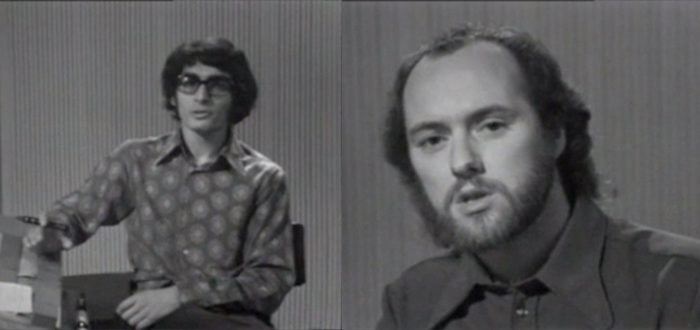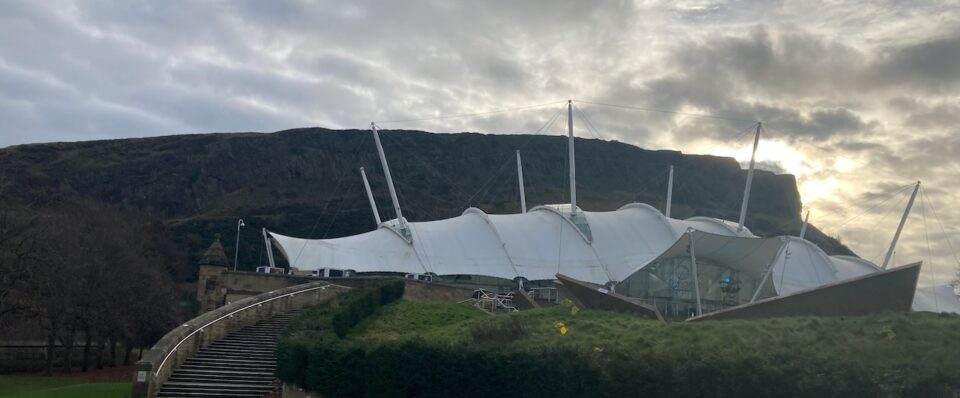One of the things we get to do now and again as academics is to speak to governments and politicians in policy areas we are interested in.
This year, the OU in Scotland contributed to the Royal Society of Chemistry event Science and the Parliament event. This brings together scientists, business, politicians, and government to discuss a topic of relevance or interest.
This year it was STEM Education and it was hosted in the slightly over-dramatic Dynamic Earth centre in Edinburgh (well, is there any need for quite such a dramatic backdrop?)
So here’s what I said to the event in the final discussion and plenary session. Unfortunately, we didn’t get the chance to discuss this with policy-makers or to outline any of the thousands of ideas we have to operationalise this across the education system. But we are always happy to go again…
—
Futures literacy and lifelong learning
I’d like to do a quick pitch for futures literacy and lifelong learning, something we’ve focused on in our technology courses since that start of The Open University. It’s also something we are now taking even more seriously as part of our response to climate emergency and sustainable futures.
Futures literacy – bit of a clunky term that means being better at talking about, understanding and influencing/changing futures.
I’m interested in that because I’m a designer, not just a technologist, scientist, or engineer. I’m interested in how science and technology intersect with art, design, and (especially) people – people is where the messy interesting stuff happens.
That intersection was the idea behind one of The Open University’s earliest courses: a course in 1972!! called Man Made Futures. Let that sink in a second because lots of things have changed since then (not least the name!).

[You can see a short clip from the module here: https://www.youtube.com/watch?v=PDfMKnCbhr4&t=1218s ]
It didn’t get everything right. But it got one thing absolutely spot on, and it’s a very ironic lesson indeed: We are terrible at predicting the future.
Let me clarify slightly – we are bad at predicting the future in certain critical ways: Good at short term (I can see cake there, my future will involve cake!); bad at medium/long term (I can see cake but not the entire physical.
In science fiction writing, a more accessible example is given in the maxim “A good science fiction story should be able to predict not the automobile but the traffic jam.” (1)
This is kind of what’s happening with AI right now – we’re great at doing the next gimmick and predicting its short term uptake – but we are not predicting the traffic jams.
Partly this is because it’s happened so fast – I mean, some technology has changed in the course of my lunchtime – not just my lifetime. AI’s been very like that: the distance between proof of concept and implementation is getting very short indeed. We are effectively designing in society.
And that’s challenging education. Science fiction writers like Arthur C Clarke or Asimov, when they wrote stories about AI, didn’t predict that a whole load of academics would be running around panicking about students cheating.
But they did ask questions about human creativity, ingenuity, cognition, all the other stuff that matters in learning how to be human.
And academics are having to do this too, now. Are having to consider how to support deep learning, thinking and cognition in students when traditional methods have been removed or are being challenged by other models. If we can generate an image of the future in seconds, what does that do to our imagination – and, most importantly, for the development of how we imagine the future?
Because it’s that deeper cognition that’s the real value of education.And it’s not just
That’s what the SG’s Innovation strategy relies on (although it doesn’t state that) There is a lot to really celebrate in there, particularly in terms of use as a creative nation. check it out if you haven’t already.
But it really does depend on there being certain resources available. Human resources. Human value.
We need creative, critical, synthetical, hysterical, abductive, thinkers. Ask yourself, where is their curriculum? Where do they learn?
And that’s where lifelong learning comes in – particularly in courses and subject areas that have the agility and flexibility to actively incorporate changes in their curricula.
You see, it’s not a negative thing to change careers or to re-learn throughout your life. In fact, another way to look at it is as a significant advantage (and I would argue, necessary one – one that has always been relevant. I changed my
But you have to make it a positive change – not a negative one. Negative, extrinsic motivation doesn’t work- “robots are going to take over your job” is not a positive way to inspire a career change or new learning.
What we need are intrinsic opportunities – chances to learn that respond to different times in our lives. AND in different ways, and in different places. That’s always been another thing the OU has tried to be: Open as to People, Places, and Methods.
More of that type of openness is required (not the pretend kind activated by negative extrinsic motivations).
And we desperately need to get better at working with the future.
In fact, we need to not only predict the car and/or traffic jam – we need to be better at both and to design in futures that accommodate both – before they become a problem.
(1) often attributed to Francis Pohl, but likely based on Asimov’s prior comment that “It is easy to predict an automobile in 1880; it is very hard to predict a traffic problem.”, from Asimov (1953, p17)
Asimov, I., (1953), Social Science Fiction, in Modern Science Fiction: Its Meaning and Its Future, Ed. Bretnor, R.


Leave a Reply